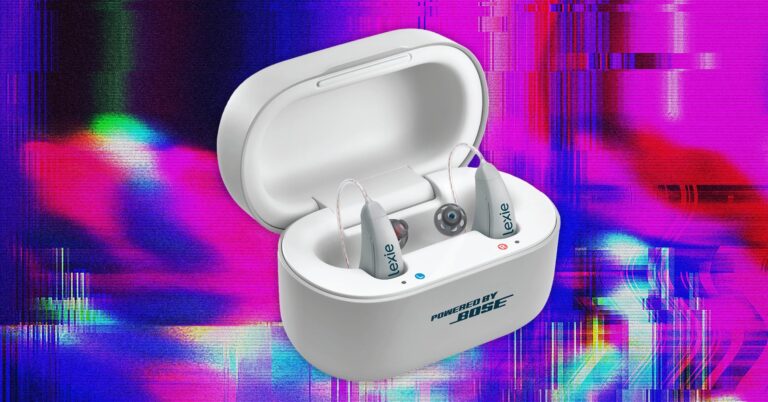If you spend hundreds or thousands of dollars buy an over-the-counter hearing aid, make sure you get a product that offers a durable, long-term solution to your hearing loss needs. Besides the obvious things like sound quality, take a few minutes to review these specs.
What size and style is best for you? Most hearing aids on the market are categorized as either behind-the-ear (BTE) or in-the-ear (ITE). BTE hearing aids are probably what you think of when you picture a hearing aid, consisting of a plastic housing that contains the electronics, a thin cable that runs over the ear and into the canal, and a small speaker called a “receiver” that sends amplified sound from a person’s surroundings into their ear. In contrast, ITE models are standalone units that look like a standard pair of wireless earbuds. In-the-ear hearing aids are popular for their incognito aesthetic, and they tend to be much easier to insert and remove than their behind-the-ear counterparts. Still, contemporary BTE hearing aids are significantly smaller than those of “back in the day.” It just depends on what feels best to you.
Replaceable or rechargeable batteries? Just like wireless headphones, most over-the-counter hearing aids come with rechargeable batteries and (usually) a portable charging case for easy transport. If you take into account the battery life of the case, you’ll find that most over-the-counter models last about a week before you need to connect to a power source. Without the case, rechargeable hearing aids provide between 10 and 24 hours of battery life per charge (but that battery life drops by a few hours if you use them to stream via Bluetooth). Replaceable batteries, like those found on the Sony CRE-C10, can last 70 hours or more before the battery dies. This sounds great, but it means having spare batteries on hand and wrestling with tiny cells, which can be difficult for people with dexterity issues.
Are you comfortable making adjustments? While prescription hearing aids are installed in-office by a licensed hearing care professional, over-the-counter devices are self-adjusting. In most cases, OTC hearing aid users should be able to adjust the devices to their ears, usually using a smartphone app. It’s certainly nice to make your own adjustments on the fly, but it can cost you in terms of personalized care.
What is the company’s customer support like? If only you could count on quality service from all hearing aid manufacturers! Unfortunately, over-the-counter hearing aid manufacturers are just that: businesses. There is no “standard” for customer service in the industry. Companies like Jabra offer their patients comprehensive support, but other brands may leave you to your fate.
Is there a test? If you’re unhappy with your hearing aids, you’ll probably want the option to return them without all that money being considered a sunk cost. Most states require manufacturers to provide patients with a minimum trial periodbut I recommend playing it safe by researching this information before purchasing.
And the guarantees? Just as important as a reasonable trial period is the inclusion of a comprehensive manufacturer’s warranty. Most brands cover manufacturing defects for up to a year, but it goes without saying that the longer the coverage period, the better the deal. Regardless of which over-the-counter hearing aid model you choose, make sure the warranty covers loss, damage, and wear and tear.


